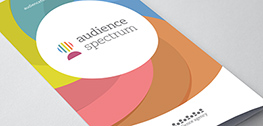- 웹진에 실린 글의 내용은 (재)예술경영지원센터의 의견과 다를 수 있습니다.
TEL 02-708-2293 FAX 02-708-2209 E-mail : weekly@gokams.or.kr
.jpg)
Audience Finder and The Use of Audience Segmentation in UK Theatre
- 글: Emma Martin_Emma Martin Arts Marketing
글: Emma Martin_Emma Martin Arts Marketing
 예술경영 484호_2022.8.25
예술경영 484호_2022.8.25
I have worked in theatre marketing for 13 years in the UK and as well as marketing upwards of 30 shows a year, online and in person, I also run marketing training for producers and help organisations to develop their strategies. I am a firm believer in audience focused marketing. No matter whom the client, my starting point with any show, student group, producer or organisation is always ‘who are your audience?’, ‘who are you making this for?’. This helps us start to form a picture of the audiences. These can be low hanging fruit - people who are already follow the company, regularly visit the theatre, or would find the show instantly appealing. Or they might be looking to bring in and develop new audiences which can take time and investment but can lead to long term growth.
Audiences will vary greatly in what they find most appealing about a show, and it is essential not only to understand this but also how to most effectively reach them: what method of communication, what copy, what image and in what format?
With our use of online box office systems we have a plethora of data about our audiences at our finger tips and for audience segmentation the goldmine is the postcode. The postcode in the UK allows us to identify our audiences down to an area with an average of around 15 addresses. Segmentation profiling in the UK has been using this as the basis for classification of market types since Acorn was created by CACI in 1978. This was the first method of segmentation developed in the UK, dividing the population into demographic types by analysing significant social factors and population behaviour. Then in 1986 CCN, Credit Control Nottingham, created Mosaic which added additional data, thereby creating a richer source of classification. Venues across the UK have utilised the mosaic system to help with analysing audience spending patterns and behaviour, however, there was little external data on how these audiences engaged culturally.
This lack of research and data was significantly impacting on venues’ ability to understand and communicate effectively to their audiences, especially those with smaller budgets and capacity. So, Arts Council England, Arts Council of Wales and Creative Scotland worked with the Audience Agency to develop Audience Finder. And Audience Finder became the UK’s first insight into audience behaviour in arts, culture and heritage.
The Audience Agency created a segmentation system called Audience Spectrum, alongside a data toolkit, to help organisations collect and analyse their own data, which in-turn, fed into a larger picture of audiences locally and nationally. This allowed them to generate audience reports, identify new audience opportunities and work collaboratively in groups to data-share and develop their practice. Alongside the segmentation and dashboard tools they also introduced Show Stats which would allow touring companies to receive data information, previously unavailable to them, without any access to their show’s box office data.
Audience Spectrum has worked to group the UK population by demographics, attitudes towards culture, interests, spend and other behavioural data. This information has been used to create 10 audience segments, broken down in levels of cultural engagement. At the top end of the spectrum we see 3 highly engaged segments named as ‘Metroculturals’, ‘Commuterland Culture Buffs’ and ‘Experience Seekers’. Then we see the medium engagement levels, ‘Home & Heritage’, ‘Dormitory Dependables’, and ‘Trips & Treats’. Lastly the lower engagement categories namely ‘Up Our Street’, ‘Frontline Families’, ‘Kaleidoscope Creativity’ and ‘Supported Communities’. You can find out more about these segments directly though their website here - www.theaudienceagency.org/audience-finder-data-tools/audience-spectrum.


So how is this used in practice? And how can these help us form more in-depth, targeted and data led marketing strategies? Organisations and companies use the data in a variety of ways, for example Park Theatre in London, who are a popular Off West End theatre space in Finsbury Park, have taken the time to tag all their data records according to segmentation, which means they can create group specific email newsletters. Knowing which segments are being targeted can help venues adjust copy and content for them, thus ensuring the right audiences are receiving the right shows, in the right way. We need audiences to trust venues and be engaged in the communication they are receiving and if we don’t know who we are talking to, what they like, how they behave and who they are we can’t build this relationship.
What do we know about the segments and how does that impact a marketing campaign? A few years ago I worked on a free, outdoor, international arts festival in Slough. When working on free work, especially festival work, it can be a real challenge to know your audiences. The festival organisers didn’t have any audience data of their own to work from so we were starting with a blank page. Audience Spectrum allowed me to identify potential audiences and use postcode areas to identify the two largest audience segments locally as the highly engaged ‘Experience Seekers’ and the lower engaged ‘Kaleidoscope Creativity’.
‘Experience Seekers’ are an audience segment who are diverse, social, interested in a wide variety of arts and highly active in their cultural behaviour. They tend to be on the younger side and keen to be introduced to new experiences, particularly more participatory arts. Alongside their cultural interests they are also the most digitally confident segment, using the internet to access almost all of their information about events, so campaigns need to ensure that theirs stands out amongst the plethora of others online. So, with this audience segment we identified the local areas in which they were most prevalent and focused our work on strong visual and video based paid social campaigns, highlighting the strong international events that would be taking place. We used social media, programmatic and focused digital outlets to appeal to them and made sure the messaging was focused on those selling points that would most engage that audience.
‘Kaleidoscope Creativity’ is a much less engaged segment, preferring culturally specific arts and festivals. They are the most ethnically diverse segment, often interested in non-mainstream activities such as street art, however due to low-income levels and lack of transport they do tend to be restricted to a limited number of local events. Although they do rely heavily on social media apps and smartphones they are unlikely to engage in arts and culture online. With this audience we focused on the closest local areas and utilised flyer door to door drops and distribution. The flyers were developed specifically with these audiences in mind; focusing the messaging on the fact the festival was local, free and diverse in its offering.
This is just one small way that understanding audiences can aid development of strategies as well as helping create the right messaging. There are many more examples of its uses across the arts marketing industry in the UK. It has allowed organisations of all sizes, with varying amounts of access to audience data, to grow a deeper understanding of how best to communicate with and develop their audiences.
Theatre marketing in the UK has been working incredibly hard to ensure that our knowledge of, and data on, audiences is at the forefront of our strategies. Thus maximizing our budgets most effectively and helping us to attract the audiences we want and need, for the work being produced.
The UK theatre scene is large and diverse with a huge amount of competition. Segmentation and a deeper understanding of audience data can help us to both develop a stronger, more targeted campaign for engaged audiences and identify new audiences with similar interests. It can also enable organisations to recognise the different audiences they want and how to develop them.
Each play, concert, art exhibition or heritage event needs to work on reaching the right audience, this can be a small targeted group or a number of more varied groups but it is always essential to start by knowing who this audience is. This should be data led and realistic, ensuring you have the right audience for the right event. Not all events will sell out thousands of seats a night but if we start with a real understanding of who we are making the work for, we can be confident that we have the right space, the right audience and the right messaging. This should be the starting point that leads to success.

Emma is a freelance Arts Marketing Consultant who specialized in strategy and campaign management for digital, touring and off-west end theatre including expertise on company brand development. With previous marketing management roles at the historic Theatre Royal Bury St Edmunds and Tara Theatre, since 2016 she has been running Emma Martin Arts Marketing.